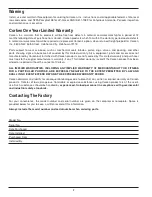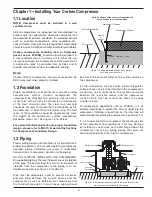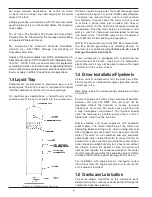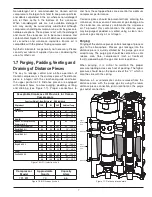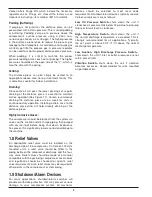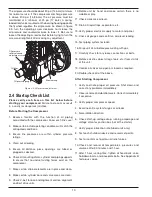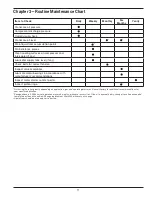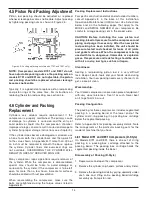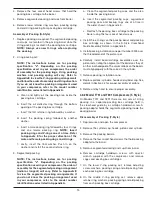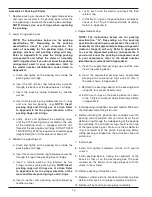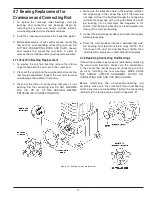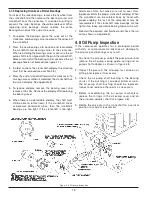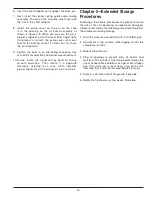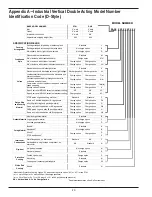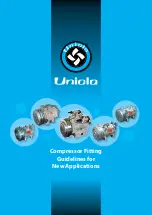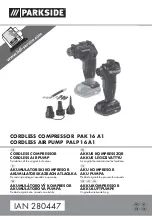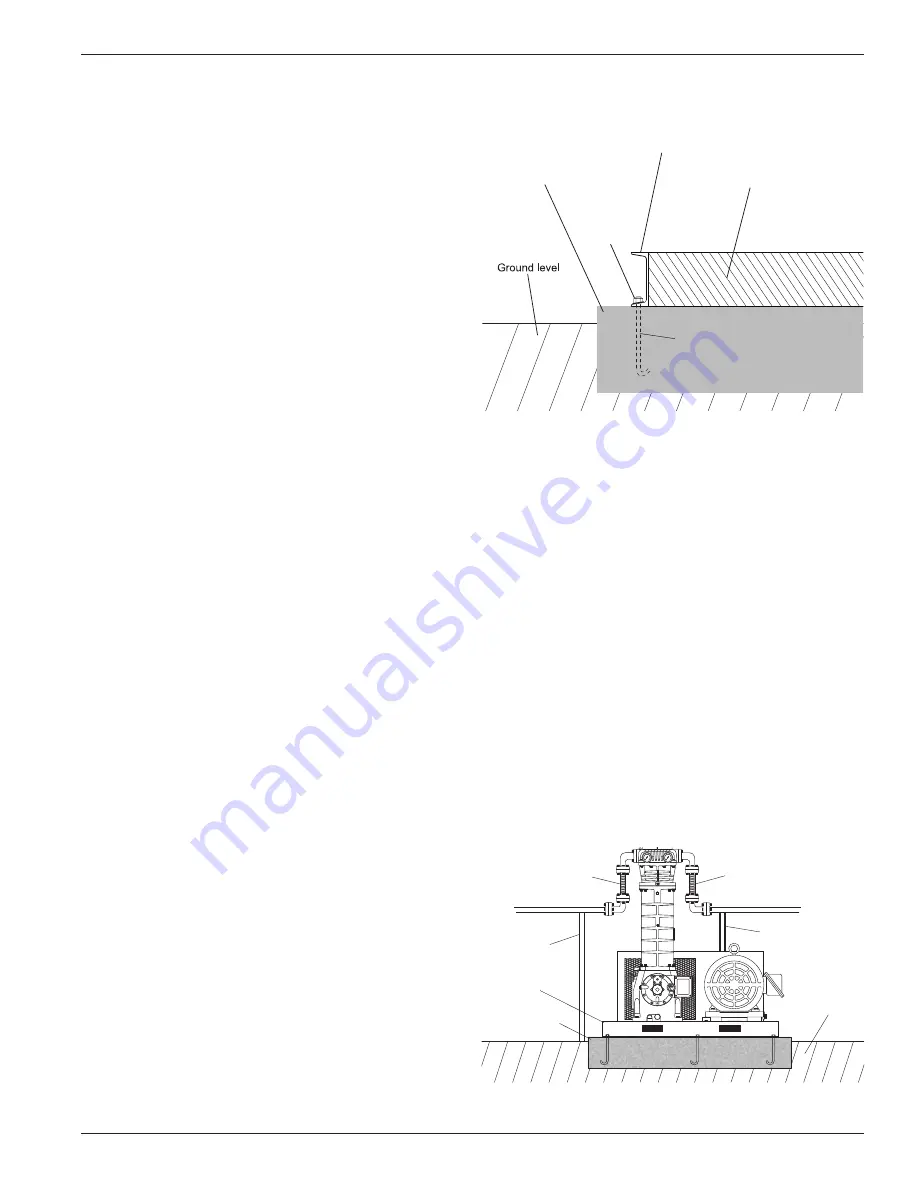
1.1 Location
NOTE: Compressor must be installed in a well
ventilated area.
Corken compressors are designed and manufactured for
outdoor duty. For applications where the compressor will
be subjected to extreme conditions for extended periods
such as corrosive environments, arctic conditions, etc.,
consult Corken. Check local safety regulations and building
codes to assure installation will meet local safety standards.
Corken compressors handling toxic or flammable
gases such as LPG/NH
3
should be located outdoors in
a well ventilated area. A minimum of 18 inches (45 cm)
clearance between the compressor and the nearest wall
is advised to make it accessible from all sides and to
provide unrestricted air flow for adequate cooling.
Noise:
Corken vertical compressors should not exceed an 85
DBA noise level when properly installed.
1.2 Foundation
Proper foundations are essential for a smooth running
compression system. Corken recommends the
compressor be attached to a concrete slab at least 8
inches thick with a 2 inch skirt around the circumference
of the steel structural skid. The steel structural skid
should be securely anchored into the foundation by 3/4
inch diameter “J” bolts that are 8 inches long. The total
mass of the foundation should be approximately twice
the weight of the compressor system (compressor,
baseplate, motor, etc.). See figure 1.2 for details.
For a more detailed explanation of a proper foundation
design, please refer to ED410, Important Instructions
for Compressor Foundation Design.
1.3 Piping
Proper piping design and installation is as important as a
proper foundation is to a smooth operating compressor.
Improper piping installation will result in undesirable
transmission of compressor vibration to the piping.
DO NOT SUPPORT PIPING WITH THE COMPRESSOR.
Unsupported piping is the most frequent cause of vibration
of the pipe. The best method to minimize transmission of
vibration from the compressor to the piping is to use
flexible connectors (see figure 1.3 for details).
Pipe must be adequately sized to prevent excessive
pressure drop between the suction source and the
compressor as well as between the compressor and
the final discharge point. In most cases, piping should
be at least the same diameter as the suction nozzle on
the compressor.
If a restrictive device such as a valve, pressure regulator,
or back-check valve is to be installed in the compressor’s
suction line, care must be taken. The suction line volume
between the restrictive device and the compressor
suction nozzle must be at least ten times the swept
cylinder volume.
On liquefied gas applications such as LPG/NH
3
, it is of
extreme importance to prevent the entry of liquid into the
compressor. Installing a liquid trap on the inlet side will
prevent liquid from entering the compressor (see section 1.4).
It is of equal importance to protect the discharge side
of the compressor from liquid entry. This may be done
by installing a check valve on the discharge side of the
compressor and using a piping design that does not
allow liquid to gravity drain into the compressor.
Chapter 1—Installing Your Corken Compressor
Figure 1.2: Recommended foundation details
for Corken compressors
Ground level
Concrete
foundation
Steel structural skid
Pipe support
Pipe support
Flexible connector
Flexible connector
Figure 1.3: Flexible connectors should be used to minimize
transmission of vibration to the piping.
Main beam (C-Beam)
Cross beam (H-Beam)
3/4″ diameter “J” bolt
Hex nut
&
washer
Concrete foundation
Note: The depth of the concrete foundation will
vary based on local soil conditions.
5


